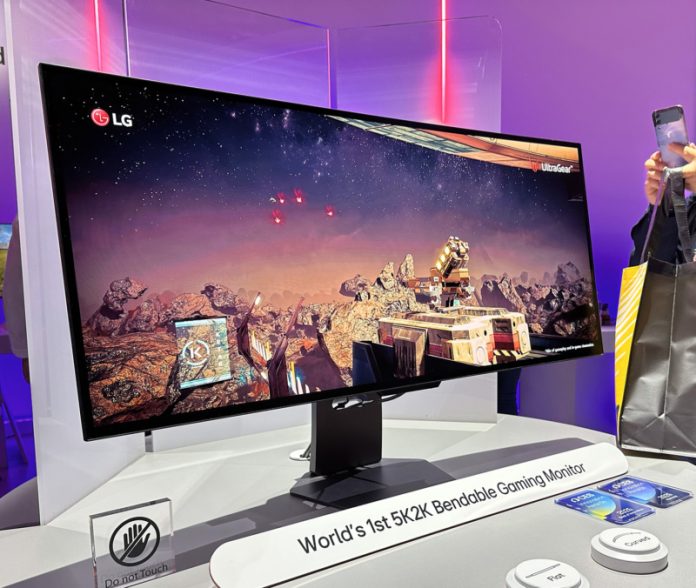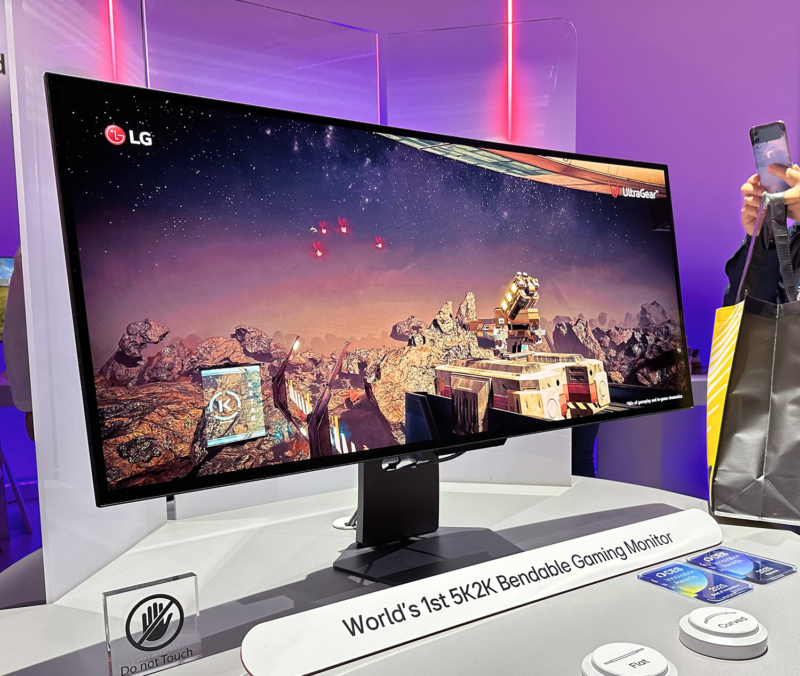
Introduction
As you’ve probably seen, LG Electronics unveiled their new 45″ ultrawide UltraGear monitors at CES 2025, the first to be announced featuring LG.Display’s new 5K2K (5120 x 2160) resolution WOLED panels. This brings a higher pixel density of ~125 PPI to these sized screens, a big step up from the ~83 PPI of the previous 3440 x 1440 resolution offerings. LG Electronics announced two new models built around this panel, the 45GX950A which has a steep 800R curvature, and the 45GX990A which has a motorized bendable format allowing you to switch between 900R curvature and flat as you like.
Panel Development
These new screens are based on the WOLED panels we told you about in our latest panel roadmap update back in Feb 2024:
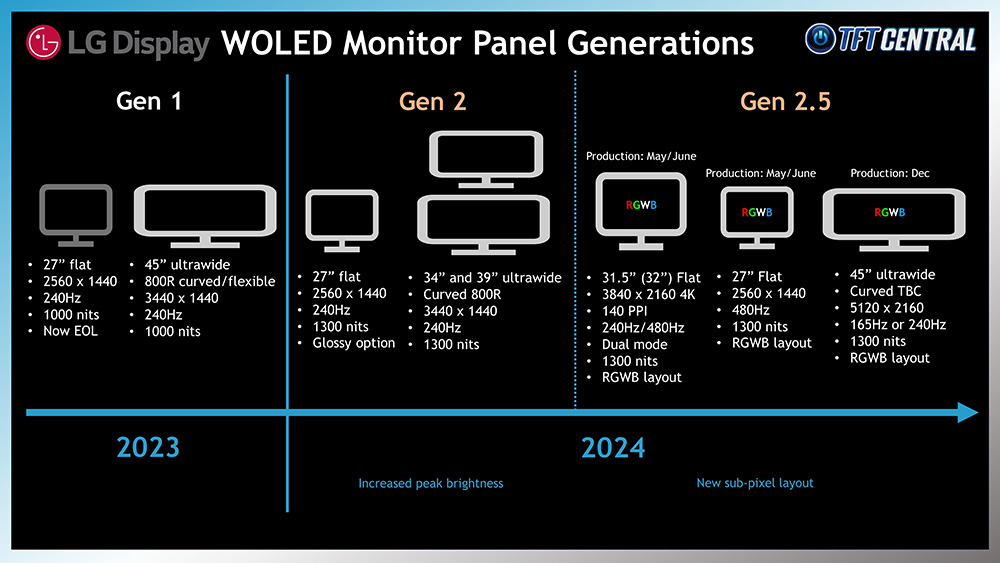
As we forecast at the time, these 45″ ultrawide panels should be in mass production now, and it looks like this is largely on track given we’ve seen the monitor announcements now for CES, and the expected release date (of the 950A model at least) is around April 2025 – that’s a usual 3 – 4 month lag from panel mass production to monitor availability. Nice to see the forecast was correct back in Feb 2024.
Before you ask, the 39″ and 34″ panels with this resolution are not planned for panel production until later on, expected in Q4 2025 so we wouldn’t expect to see monitors of that size with this resolution until probably this time next year at best. We’ll provide an update on panel roadmaps, generations and plans in the near future but for now we will focus on the 45″ 5K2K panels as those are in production first as planned.
You may notice from this roadmap that LG.Display were planning this 45″ panel with both a 165Hz refresh rate and a 240Hz refresh rate. So why have we only got the 165Hz refresh rate so far, and where’s that 240Hz panel? Where are the monitors with 5K2K at 240Hz?
Is this just a money grab? We don’t believe so
The cynical amongst us might say that this is a bit of a money grab – release a lower refresh rate monitor now at 165Hz, then provide the faster 240Hz refresh rate model later on to scoop up more of people’s money. But realistically, are many people going to spend $2000 USD on a new screen now at 165Hz, then upgrade it to a 240Hz model for a similar (by the time it’s released) or probably higher price later on as well? It’s not a huge difference in refresh rate.
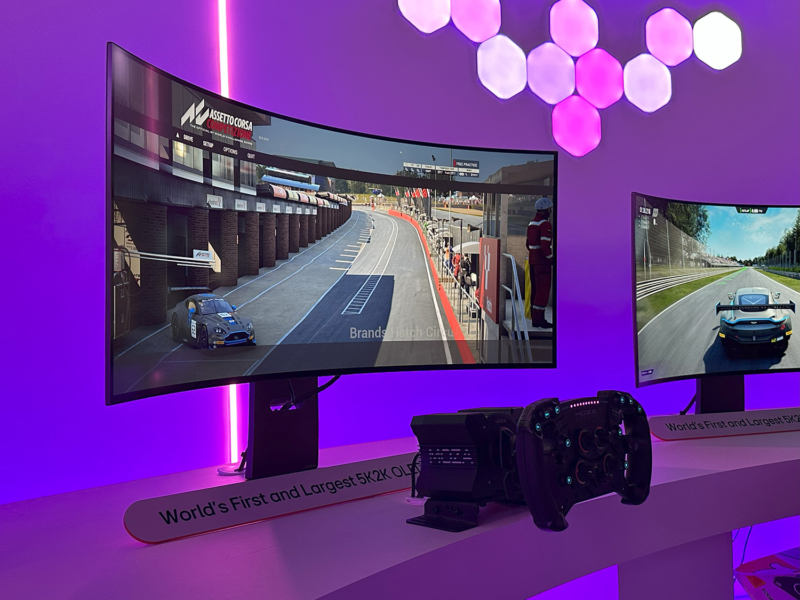
We expect actually that by not providing a 240Hz version now, it could cost LG Electronics sales in the long run as people hold off on buying the new screens now and wait for the 240Hz version later which we expect to come at some point. By which time they’d almost certainly have lost their market advantage as other manufacturers adopt the same two panels and release their own screens. Right now LG Electronics are the only manufacturer who have screens announced based on these new panels and so have a competitive advantage for now. We don’t think that this is the reason why they aren’t developing a 240Hz version at this time.
Video connectivity is likely to blame
Actually we expected the primary reason for the missing 240Hz refresh rate version right now is down to video connectivity.
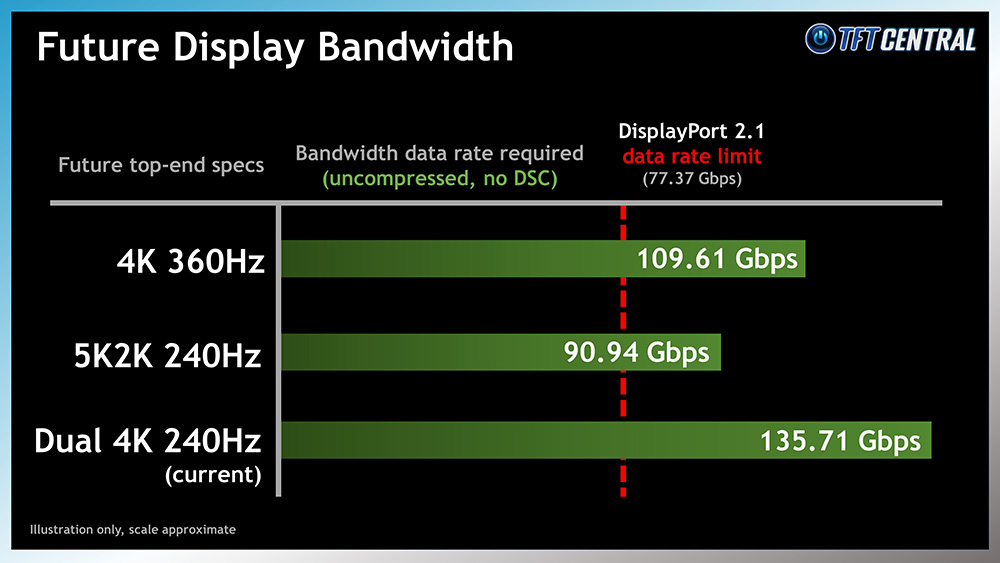
To power a 5120 x 2160 resolution at 240Hz and 10-bit colour depth you need ~90.94 Gbps bandwidth for an uncompressed video signal. Or if you use DSC it needs only ~30.31 Gbps. These figures depend slightly on display timings but should be approximately correct. An uncompressed video signal isn’t going to be possible for this spec even on the top-tier DisplayPort 2.1 UHBR20 connections, which reach a maximum of 80 Gbps, or rather 77.37 Gbps data rate which is what we’re talking about here with these bandwidths.

Maybe the future HDMI 2.2 connections could support that, with initial specs suggesting they will offer up to 96 Gbps of bandwidth, but that spec is really just in a conceptual stage and is likely several years away from being available on monitors or graphics cards. Don’t hold your breath for HDMI 2.2 in the monitor space for any time soon.
So, to power 5K2K @ 240Hz, you’re always going to need to use DSC (Display Stream Compression).
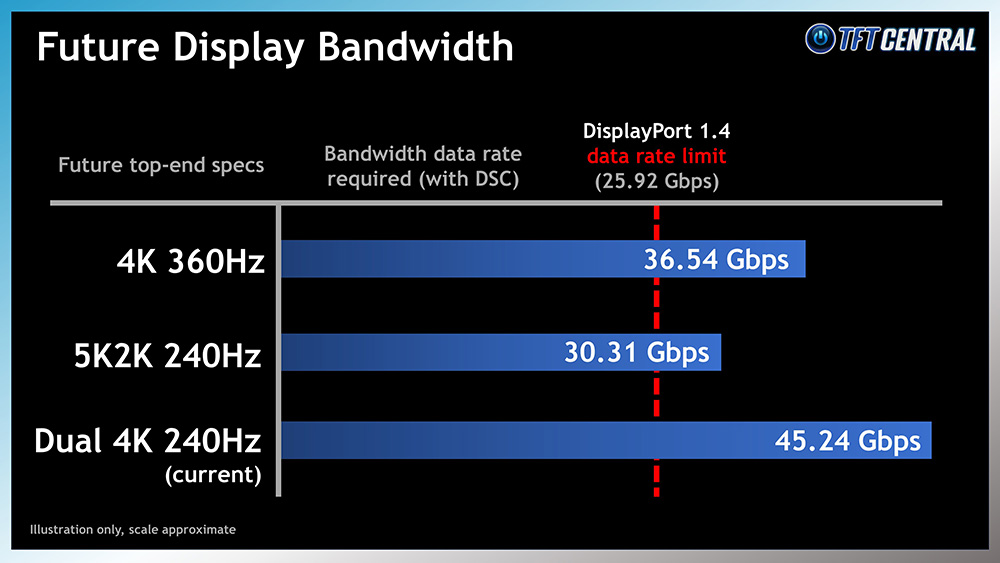
The problem is though that even using DSC you need 30.31 Gbps of bandwidth for 5K2K @ 240Hz, and that’s beyond the capability of DisplayPort 1.4 with DSC which caps out at 25.92 Gbps. So that means to power 5K2K @ 240Hz with DSC, you are going to need a DisplayPort 2.1 graphics card.
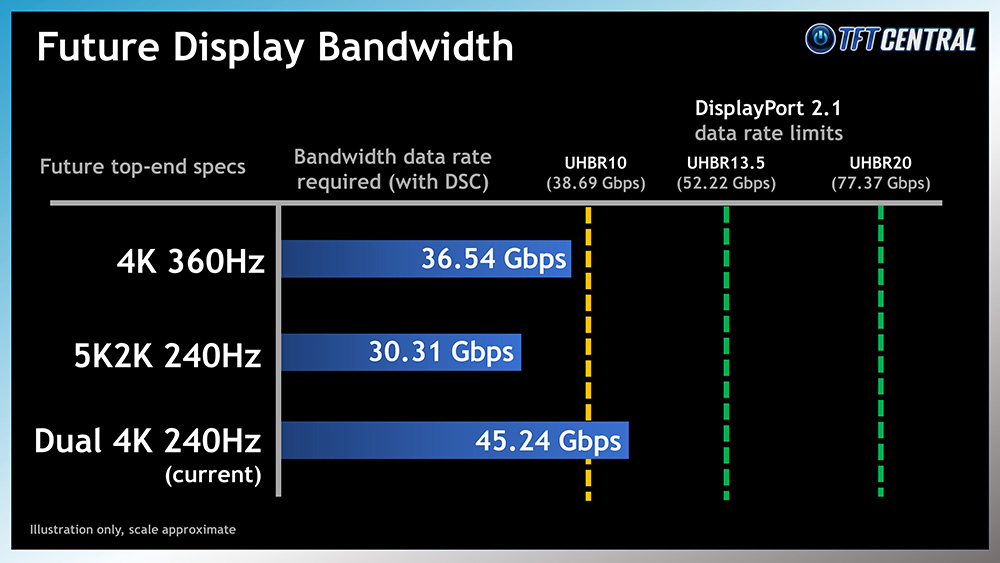
Given DSC will always be needed, this could be achieved with even the lowest UHBR10 tier in theory (38.69 Gbps data rate), but obviously UHBR13.5 and UHBR20 would be fine too.
Getting to the point then, the reason why we suspect the 5K2K 240Hz monitor options are not yet being announced is largely down to support from end-user devices. Right now as we write this, you can only buy a couple of graphics cards from AMD which feature any form of DisplayPort 2.1 connectivity, UHBR13.5 for their top-end consumer cards and UHBR20 for their top-end professional cards. Thankfully NVIDIA have now formally announced their RTX 50 series cards which will feature UHBR20 DisplayPort 2.1 connectivity, but as we discussed at length in the past their slow adoption of this video interface has definitely impacted its uptake on the monitor side of things. So right now the availability of graphics cards that could even support a 5K2K 240Hz spec is very limited.
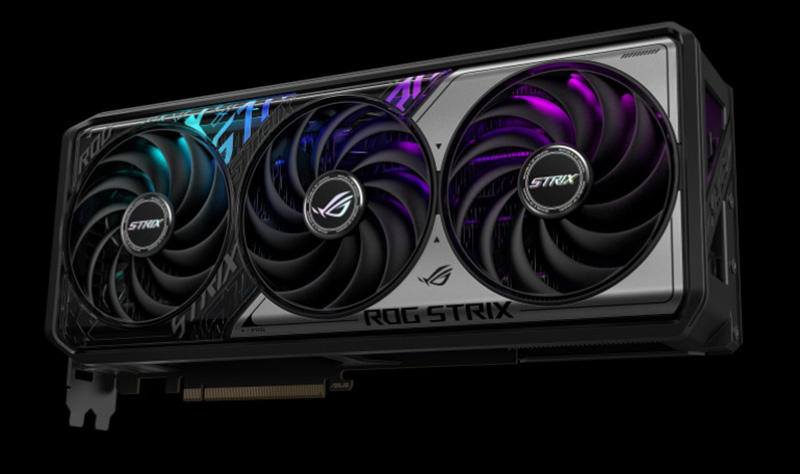
That means it will have been difficult to develop the product in the first place, especially with the lack of any NVIDIA cards to build around, test with and ensure compatibility. Have a look at our previous article for more discussion on that.
It also means that if you did spend the time and money developing a product based around that 240Hz panel, you’d have a severely limited market in which to sell it. Your only audience who could use the screen properly at its intended spec is those who have a DP 2.1 card, and those are going to be very few and far between right now.
The 5K2K 165Hz panel has a much wider reach
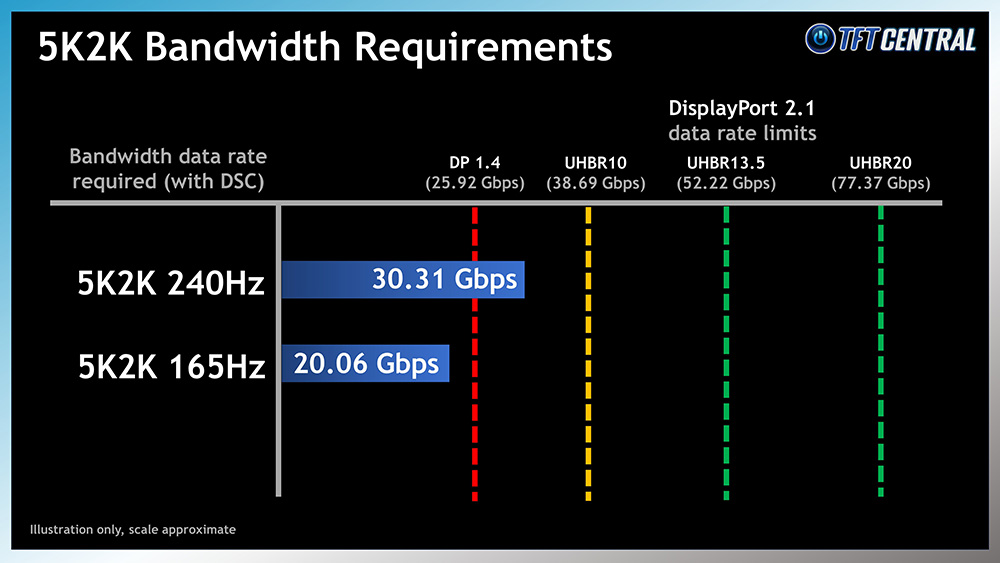
In contrast, the 5K2K 165Hz panel can reach a much wider audience. That needs only 20.06 Gbps of bandwidth with DSC being used, which now fits within the data rate of DisplayPort 1.4 (25.92 Gbps). Using this panel, you have a massive consumer base who have DP 1.4 graphics cards who will be able to use this screen properly. You aren’t limiting your market potential, and you also aren’t developing a product at a time when input devices and graphics cards are very limited which carries a risk in itself. It makes a lot more sense to release the 165Hz version right now given the state of the graphics card market and the adoption levels of DP 2.1.
Later on, once NVIDIA’s cards are more widespread, tested and have had time to mature and address any bugs or niggles, it will be more viable to develop a 240Hz version and release that to market we think. More people will have DP 2.1-capable cards and you’ll have a larger viable market.
Why not release it now anyway so people can upgrade later?
“Can’t they just produce it now at 240Hz and then you run it at lower refresh rate now until you’ve got a new graphics card”, you might ask? Possibly, but you’re reliant then on the average consumer realising and understanding that they won’t be able to run the >$2K monitor they’ve just brought at its intended and listed spec until they spend even more money on a brand-new, expensive new graphics card.
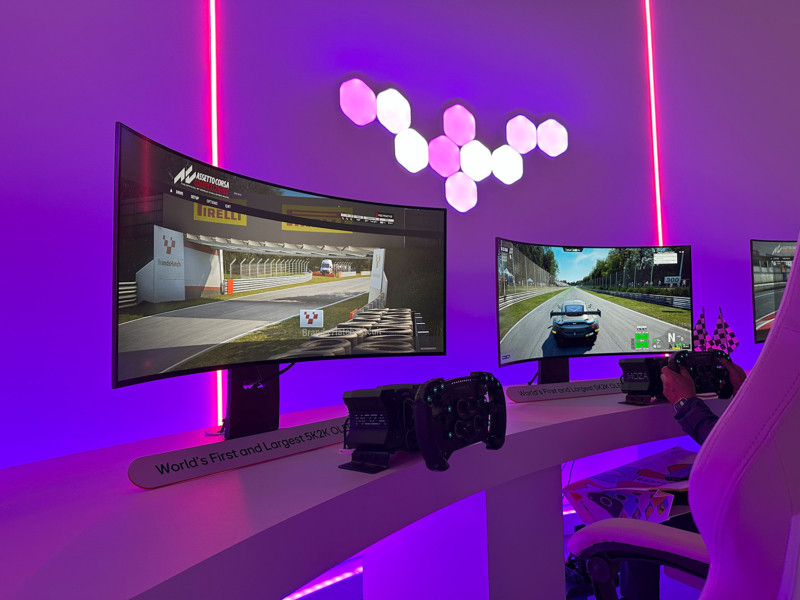
We still see a lot of people not realise today that when they buy some of the new high-end monitors (4K 240Hz, 1440p 480Hz etc) that they will need a modern graphics card – many still have older cards before DSC was included for instance and so run in to problems. You can’t rely on on your market understanding these things all the time, and that’s a significant risk. Outside of perhaps the enthusiast space who might understand this and be willing to play the long game, it’s not a great customer experience to buy a nice new screen and not be able to use it fully.
As we also said, there’s development challenges and risk in trying to produce a 240Hz screen while the source devices (graphics cards) are very limited.
What about using HDMI 2.1 instead?
An interesting counter to this argument is that HDMI 2.1 actually has sufficient bandwidth to support 5K2K 240Hz with DSC. That supports up to 41.89 Gbps, which is enough for the 30.31 Gbps that this spec requires. HDMI however is not really the primary connection choice for graphics cards, with most screens developed around the wider availability of DisplayPort. You could potentially use HDMI 2.1, but again your addressable market will be fairly limited as HDMI 2.1 is still quite new. It’s better than DP 2.1 though for sure. You’ve also then got the same problems with those cards only having DisplayPort 1.4 on those same cards, and all the confusion that will no doubt cause with support of this screen.
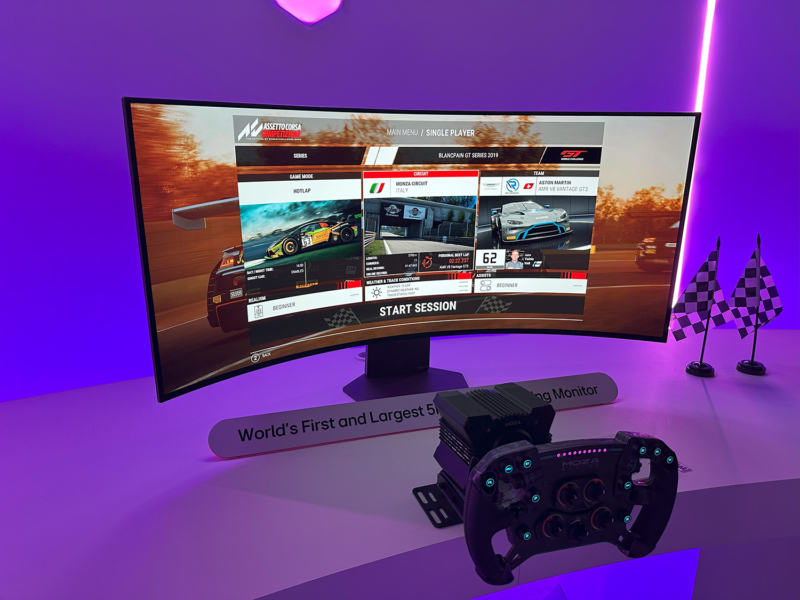
The future of 45″ Ultrawide OLED monitors
We fully expect other manufacturers to adopt this new WOLED panel and release their own versions of the LG screens announced at CES. Asus seem a logical choice, given they’ve made use of both LG.Display WOLED and Samsung Display QD-OLED panels for their monitors before, the only manufacturer to “double dip” that we can think of. They haven’t announced any yet though, but here’s our full coverage of everything they did announce at CES this year.
MSI (their CES news is here), Gigabyte and of course Samsung Electronics seem to all be tied to QD-OLED. Maybe others like AOC or Philips for instance might release WOLED screens too, we will have to wait and see. We expect for the reasons discussed in this article that the 5K2K 165Hz panel will be the first to be adopted, but a 240Hz version should still come in the future. Probably not though until DP 2.1 is more widely available and mature on the graphics card side of things, perhaps towards the end of the year. More information on all of this of course when we get it.
If you’re interested in LG’s announced 45″ OLED models, you can sign up on LG.com to receive updates and also take advantage of a $100 off voucher. Details here
Additional useful content:
We may earn a commission if you purchase from our affiliate links in this article- TFTCentral is a participant in the Amazon Services LLC Associates Programme, an affiliate advertising programme designed to provide a means for sites to earn advertising fees by advertising and linking to Amazon.com, Amazon.co.uk, Amazon.de, Amazon.ca and other Amazon stores worldwide. We also participate in a similar scheme for Overclockers.co.uk, Newegg, Bestbuy and some manufacturers.
Stay Up To Date
Please give us a quick subscribe on our growing YouTube channel to help support us, and to stay up to date on new content there!
 |
 |
 |
 |
| Browser Alerts | Follow us on X (Twitter) | Subscribe | Support Us |
Popular Trending Articles

